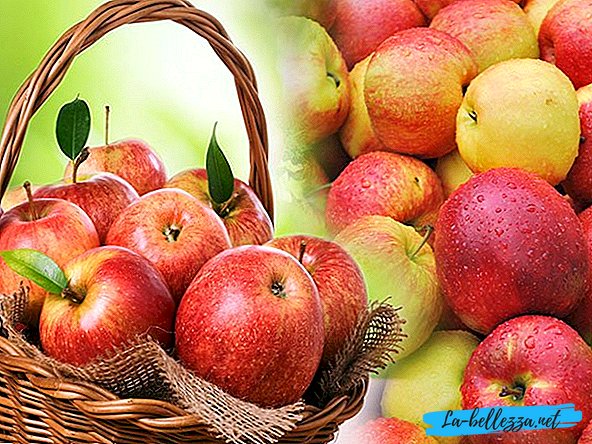
Perennial clematis quickly grows and develops, before the gardener, sooner or later, the question arises of the propagation of the flower. When and how to do it correctly in order to guarantee a result is the main topic of this article.
When is it better to propagate clematis?
The breeding time for clematis depends on the method chosen, the region of growth and the condition of the uterine plant.
Cuttings of the bush are carried out in spring and autumn, but they use different rooting technologies. It is noted that the viability of spring plants is higher. Shoots for rooting are cut to flowering.
Autumn cuttings are carried out at the end of summer, shoots remaining after pruning are taken for rooting.
To divide the bush resort in early spring. The procedure is complicated, it is difficult to separate the rhizomes of old plants.
Seed propagation of a flower is rarely used, since varietal clematis poorly sets seeds. In addition, maternal characteristics are not preserved. For those who want to try, it is better to start work at the end of winter so that the seeds pass stratification in a natural way.
The layering method for breeding clematis has been used for a long time. It is especially popular as it does not require effort. Better to do this fall.
How to propagate clematis with green cuttings
For cuttings, choose a plant no older than 4 years. In late spring, get to work.
Preparing planting material
Shoots for rooting are harvested from the annual side branches that appeared after shearing. Apical cuttings do not root.
The shoots are cut into pieces, each should have several buds. The lower cut of the twig is done directly under the kidney. Remove a third of the leaves at the bottom of the shoot, the rest is shortened by a third.
Important! Until rooting, the cuttings are stored in water in a dark place.
The technology of planting green cuttings
For rooting, use loose peat-sandy soil, which fill the box. The shoots are buried by 2.5 - 3 cm. Watered abundantly. The distance between the cuttings is observed at the level of 5 cm.
Important! It takes up to two months to root. All this time a regular plant is sprayed.
When and how to propagate clematis with lignified cuttings
Cuttings are cut in the fall, stored in a cool dark place until spring. If this is not possible, then the shoots are immediately planted in individual containers.
Preparing shoots for planting
Twigs are cut from the middle part of the bush, not more than 10 cm long. They are prepared as described above. But in the case of lignified cuttings, they must be kept in a solution of a growth stimulator for about a day.
Rooting instructions
It is better to root shoots in peat pots so that the root system develops correctly. They are buried in the soil at an angle so that one kidney is covered by the ground.
Cups are kept in a room where the temperature is within 25 ° C. Every day, cuttings are sprayed from the spray gun to maintain the necessary humidity. You can install a mini greenhouse, only it needs to be regularly ventilated.
Important! It takes from one to one and a half months to root. Young plants obtained after autumn cuttings are stored in the basement all winter.
Is it possible to propagate clematis with layering
Root your favorite varieties of clematis can be layered. With this method of propagation, all varietal characteristics of the flower are fully preserved. The rooting process is long, but simple.
1. In the fall, choose several annual shoots that are closer to the ground. Leaves are removed from the bottom.
2. Prepare a landing groove 10 cm deep. The shoots are gently tilted to the ground and laid in a groove. Fall asleep with fertile soil.
3. In several places, the plantings are gently pinned to the ground.
If the weather is dry, the bends are regularly watered. In the spring on the bends, you can see the growth of new shoots from the axillary buds. Young plants are regularly watered and fed throughout the season. Only a year later, in early spring, they are disconnected from the mother bush and transferred to a permanent place.
Reference! The abundant flowering of young clematis will begin three years after transplantation.
Seed propagation of clematis
Non-varietal clematis can be propagated by seeds, most often they are independently bred by self-sowing. These are wild plants with small flowers.
Seeds are sown directly in the open ground in spring, best in April. But before that they are stratified - soaked for several days and put in the refrigerator for 2 months.
You can do otherwise:
1. In autumn, clematis seeds are sown on a flower bed. It is unnecessary to close them, they will independently be drawn into the soil to the required depth.
2. In the spring, friendly shoots appear at this place. Seeds naturally go through stratification; no further action is needed.
When the seedlings grow, the plants are planted in a permanent place. Only the strongest seedlings are chosen, which in the future will give an abundance of flowers.
It is not necessary to allow self-seeding of clematis, otherwise it will soon fill the entire flowerbed. After flowering, seed boxes are best removed.
Important! Varietal clematis in this way can not be propagated. They will not pass on to a new generation of varietal qualities. As a result, you will grow wild species.
We multiply adult clematis: division of the bush
By dividing the bush, young and old bushes of clematis can be propagated. But for each plant its own characteristics of breeding.
Young clematis under the age of 5 are completely dug out of the ground. The roots are shaken off excess soil and a sharp knife is divided into several parts. Each split must have two shoots. After that, the bushes are planted in a permanent place.
Adult clematis form large roots, so they do not need to be dug up, otherwise the plant may die. You need to act like this:
1. Dig a deep hole on one side of the bush.
2. Rinse the roots with a stream of water so that it is clear where to divide the plant.
3. Cut off a part of the rhizome with a shovel and pull it out. Fill the hole with fertile soil.
4. The resulting rhizome is divided into several parts, so that each has several kidneys.
5. Plant delenki in the garden.
It is better to carry out the procedure in the early spring, until the shoots start to grow. Over the summer, such clematis will take root well in a new place and successfully winter.











